
CASE OF THE DAY 10 NOV
Question:
A 71-year-old woman was referred with a six-month history of pressure symptoms in her lower abdomen. The patient described longstanding swelling in both legs, denied any changes in bowel habits and described an increase in frequency of micturition. Past history included, osteoarthritis, recurrent urinary tract infections and a mini-stroke managed with anticoagulants. The patient reported a mild paresthesia in her medial thigh region.
What is your diagnosis?
 |
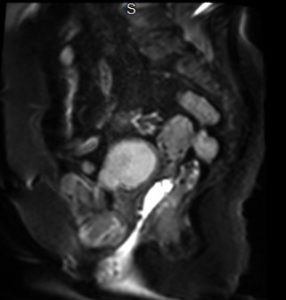 |
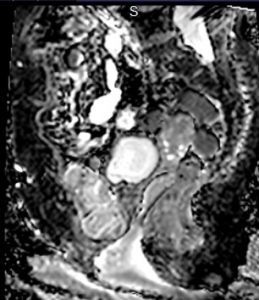 |
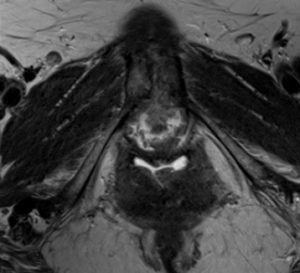 |
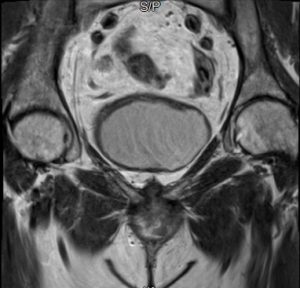 |
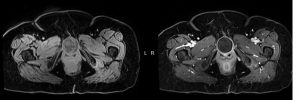 |
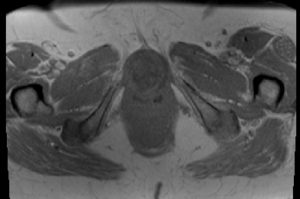 |
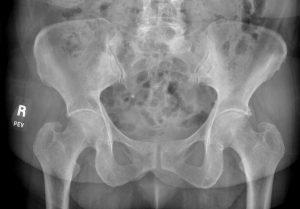 |
- Answer:
3) Suprapubic cartilaginous cyst
- Findings:
Radiograph findings:
- In pelvic X ray , faint soft tissue density is seen in supra pubic region. No bony lesion is detected.
MRI findings:
- Soft tissue mass
- Location: Centered at the symphysis pubis
- Signal characteristics: Mixed hypo and hyperintensities in T1 and T2 weighted images
- Homogeneity: Heterogenous
- Zone of transition: Narrow. Well-defined without surrounding edema, remodeling of the pubic bodies. Lesion has mass effect on the urinary bladder but seems separate from its wall.
- Periosteal reaction: Absent.
- Contrast enhancement: Well-circumscribed and rim-enhancing, no internal enhancement.
- Restricted diffusion: Absent.
Discussion:
- Suprapubic cartilaginous cyst (SPCC) is a rare condition known to occur in postmenopausal multiparous women.
- It is due to the degeneration of the pubic symphysis and due to its slow progression and rarity in occurrence, it is often misdiagnosed.
- Presentation includes a painless mass in the suprapubic region, urinary retention, recurrent urinary tract infections, dysuria and dyspareunia. This condition needs to be considered in postmenopausal patients presenting with a vulvar mass, recurrent urinary tract infections or paresthesia in the medial thigh region.
- A patient presenting with a smooth, rounded, painless, cyst, fixed to the symphysis pubis in the anatomical midline, in a post menopausal multiparous women, should arouse suspicion of a SPCC.
- MRI and CT are the best modalities for the diagnosis of this condition.
- Knowledge of this condition is of great importance, as this is a benign condition that is managed conservatively, thereby avoiding unnecessary procedures.
- Surgical resection has not shown to have any additional benefit.
Durgakeri P, Strauss P, Stribley K. Suprapubic cartilaginous cyst – A case report. Australas Med J. 2013 Mar 31;6(3):126-8.
Courtesy of Dr.Parham Pezeshk.Assistant Professor, Division of Musculoskeletal Imaging Department of Radiology, University of Texas Southwestern Medical Center,Dallas,TX
